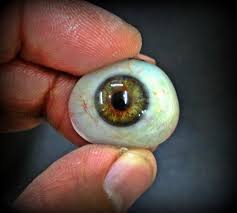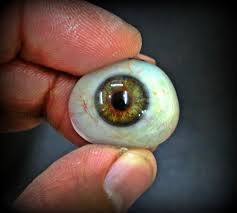
There are three primary factors that result in blurry images - focus, astigmatism, and image shift. A recent study by researchers at Harvard has claimed that a flat, electronically controlled artificial eye has bene developed by them which is able to efficiently control all of the above mentioned three factors.
The functioning of the human eye formed the primary basis of the study that was published on Friday in the journal Science Advances. The development showcased the usability of embedded optical zoom and autofocus that are found in cell phone cameras, eyeglasses and even in the hardware for virtual and augmented reality.
"This research combines breakthroughs in artificial muscle technology with metalens technology to create a tunable metalens that can change its focus in real time, just like the human eye," said Alan She, a Harvard graduate student and the paper's first author.
"We go one step further to build the capability of dynamically correcting for aberrations such as astigmatism and image shift, which the human eye cannot naturally do," She said.
Focusing and letting light pass through a dense pattern of nanostructures enables the elimination of spherical aberrations in the new type of lens that is called Metalens. Each of the nanostructures are smaller than a wavelength of light.
The metalenses have been enlarged in diameter up to centimeters or more by the researchers. The new metalens has also been made compatible with the technology that is presently made use in fabricating of integrated circuits by the development of a new algorithm to address the needs for huge amounts of massive data that is created by larger metalens.
"This research provides the possibility of unifying two industries: semiconductor manufacturing and lens-making, whereby the same technology used to make computer chips will be used to make metasurface-based optical components, such as lenses," said Harvard professor Federico Capasso, the senior author of the paper.
The ability of the metalens was to focus was not compromised even after the researchers managed to attach it to an artificial muscle.
The focal length in the human eye is changed and altered by the change in shape of the lens where there is stretching or compression of the lens with the help of the ciliary muscle which surrounds the human lens. A thin, transparent elastomer with low loss was chosen by Capasso and his team. This elastomer allowed light to pass through the material without much scattering of the light.
Voltage application controls the elastomer. There is shifting of the positions of the nanopillars ono the lens surface with the stretching of the elastomer.
The total displacement of the structures and the relative position of the pillars with respect to those in the surrounding can turn the metalens. The combined thickness of the lens and muscle is only 30 microns.
The researchers said that a single plane of control can be used for correction of aberrations and integration of different optical capabilities due to the flatness of the adaptive metalens.
(Source:xinhuanet.com)
The functioning of the human eye formed the primary basis of the study that was published on Friday in the journal Science Advances. The development showcased the usability of embedded optical zoom and autofocus that are found in cell phone cameras, eyeglasses and even in the hardware for virtual and augmented reality.
"This research combines breakthroughs in artificial muscle technology with metalens technology to create a tunable metalens that can change its focus in real time, just like the human eye," said Alan She, a Harvard graduate student and the paper's first author.
"We go one step further to build the capability of dynamically correcting for aberrations such as astigmatism and image shift, which the human eye cannot naturally do," She said.
Focusing and letting light pass through a dense pattern of nanostructures enables the elimination of spherical aberrations in the new type of lens that is called Metalens. Each of the nanostructures are smaller than a wavelength of light.
The metalenses have been enlarged in diameter up to centimeters or more by the researchers. The new metalens has also been made compatible with the technology that is presently made use in fabricating of integrated circuits by the development of a new algorithm to address the needs for huge amounts of massive data that is created by larger metalens.
"This research provides the possibility of unifying two industries: semiconductor manufacturing and lens-making, whereby the same technology used to make computer chips will be used to make metasurface-based optical components, such as lenses," said Harvard professor Federico Capasso, the senior author of the paper.
The ability of the metalens was to focus was not compromised even after the researchers managed to attach it to an artificial muscle.
The focal length in the human eye is changed and altered by the change in shape of the lens where there is stretching or compression of the lens with the help of the ciliary muscle which surrounds the human lens. A thin, transparent elastomer with low loss was chosen by Capasso and his team. This elastomer allowed light to pass through the material without much scattering of the light.
Voltage application controls the elastomer. There is shifting of the positions of the nanopillars ono the lens surface with the stretching of the elastomer.
The total displacement of the structures and the relative position of the pillars with respect to those in the surrounding can turn the metalens. The combined thickness of the lens and muscle is only 30 microns.
The researchers said that a single plane of control can be used for correction of aberrations and integration of different optical capabilities due to the flatness of the adaptive metalens.
(Source:xinhuanet.com)





